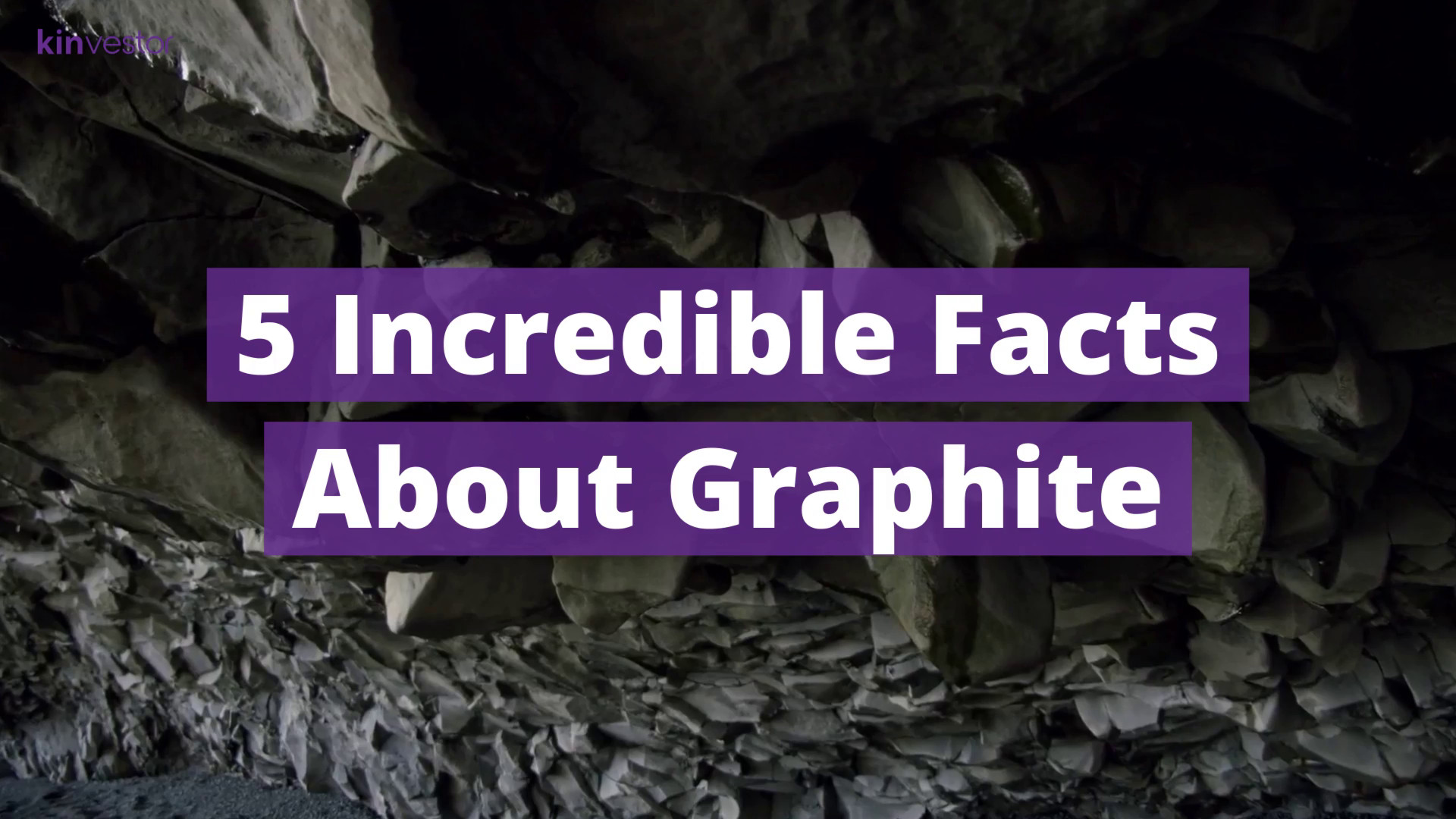
February 24, 2022
Now more than ever, electrification and the use of clean energy is becoming an important topic for individuals and governments around the world. It is no longer a consumer choice, but a necessary step towards achieving net-zero emissions.
Graphite is becoming increasingly vital to this “green revolution,” especially with its use in EV battery components. Keep reading for 5 incredible facts about this underappreciated commodity from the Kinvestor Network.

1. Conductivity
Graphite is the only non-metal that can conduct electricity. With delocalized electrons and a high electrical conductivity of around 104 S cm−1, this makes graphite useful for electrodes in batteries and for electrolysis.
In addition to being an excellent conductor, graphite has also shown high thermal stability, chemical resistance, and mechanical properties compared to other conductors like copper, aluminum, silver, and zinc. Graphite is also less expensive than other conductive materials, making it a top choice for thermal conductivity.

2. Going Nuclear
Because of its unique ability to absorb fast-moving neutrons, graphite is often used to construct the core of nuclear reactors. Its absorbing properties can be used to control the speed of the nuclear fission reaction that takes place in nuclear reactors, and can also minimize the impact of earthquakes on the nuclear core.
In gas-cooled reactors (GCRs) and advanced gas-cooled reactors (AGRs), graphite is used as a moderator with carbon dioxide as a coolant. The graphite moderator allows natural uranium (in GCRs) or very low-enriched uranium (in AGRs) fuel to be used.
In light water graphite reactors (LWGRs), enriched fuel is placed in pressure tubes with the light water coolant and surrounded by the graphite moderator.

3. Jack-of-all Trades
Graphite is a mineral that does it all. The material is extremely soft, cleaves with very light pressure, and has a low specific gravity. In contrast, it is very resistant to heat and nearly inert in contact with almost any other material. These extreme properties give it a wide range of uses in manufacturing and metallurgy – it is used in the manufacturing of writing materials, lubricants like grease, paint, nuclear reactors, batteries, graphene sheets, and more.
In many of its forms, graphite is often mixed with other materials. In its amorphous form, the mineral is mixed with clay to make the “lead” cores of pencils and other writing and art materials. In paint, powdered graphite is mixed in to make the paint more durable when painted on walls. Graphite is also one of the main ingredients in lubricants like grease and can also be used as a repellent.
The graphene sheet, a rolled derivative of graphite, is 10 times lighter and 100 times stronger than steel , and is the world’s strongest identified material. One use of graphene sheet is in the manufacturing of lightweight sports equipment.
Aside from its popular use in electric vehicle battery components, graphite is also used for mechanical applications to engineer piston rings, bearings, and as a substitute for asbestos in automobile brake linings.

4. Diamond’s Sibling
Graphite and diamond share the same composition – they are chemically identical – but have several physical differences. Both minerals are composed of carbon; however, graphite has a hexagonal crystal system while diamonds have an isometric crystal system. Minerals with identical chemistry but different crystal structures are known as polymorphs.
While diamond’s isometric structure provides strong bonds in three dimensions, creating a much harder substance, graphite forms in sheets and has strong bonds on the same layer but only weak bonds to the layers above or below. The strong inter-layer bonds are what makes graphite an excellent material for high-performance equipment when rolled into graphene sheets.
Visually, graphite is opaque and metallic, while diamonds are transparent and brilliant. Graphite is very soft (1-2 on the Mohs hardness scale) and is formed within the Earth’s crust at lower temperatures and pressures. Diamonds, on the other hand, are the hardest known natural substance, rating a 10 on the hardness scale, and are formed in the mantle of the Earth under extreme heat and pressure.

5. Big Demand
With up to 100 kilograms of graphite needed for the average electric vehicle, it is no wonder that graphite has become such a key resource in the EV battery market. Graphite is used as an anode material in the manufacturing of EV batteries, for which there is no substitute.
Graphite is a promising substitute for lithium anodes, which create more powerful batteries but are less stable over time. Because lithium expands when charged, the surface of a lithium cathode becomes cracked over time, allowing lithium ions to escape.
Lithium-ion battery manufacturers also face challenges such as high manufacturing costs, with up to 50% of vehicle costs coming from lithium-ion battery manufacturing. While most of the world’s supply of graphite currently comes from China, North America is a growing producer of flake graphite. Canada already hosts producing graphite mines, and new projects in the United States are expected to reach production in the next 10 years. Because of the long-term outlook for North American flake graphite, the low-cost material is currently viewed as only a short-term supplement to synthetic graphite, which is much more expensive to produce.
Looking forward, the rising popularity of hybrid and electric vehicles are expected to continue to drive strong demand for graphite and its materials. According to recent data from Research and Markets, the global graphite industry is expected to be worth US$26.8 billion by 2025 at a CAGR of 8.5% from 2017 to 2025.
For a video summary of these 5 Incredible Facts About Graphite, click here.
About the Kinvestor Network
The Kinvestor Network is an exclusive network of investors that want access to enhanced research and reporting. Members of the Kinvestor Network have access to exclusive articles, reports, models and various other tools that investors may find useful.
Visit the Kinvestor Network for more free content, including in-depth research reports, industry documentaries, CEO interviews, and more.
Please read this disclaimer in its entirety before reviewing any opinions, views or information expressed by Kin Communications Inc. (“Kin”).

